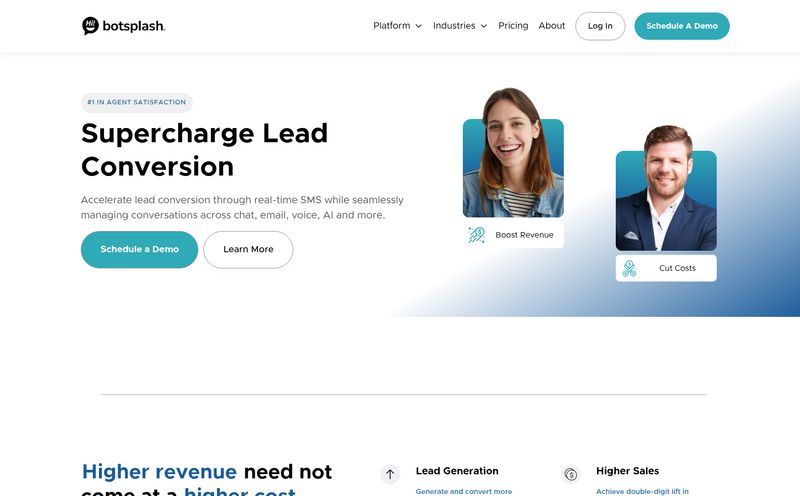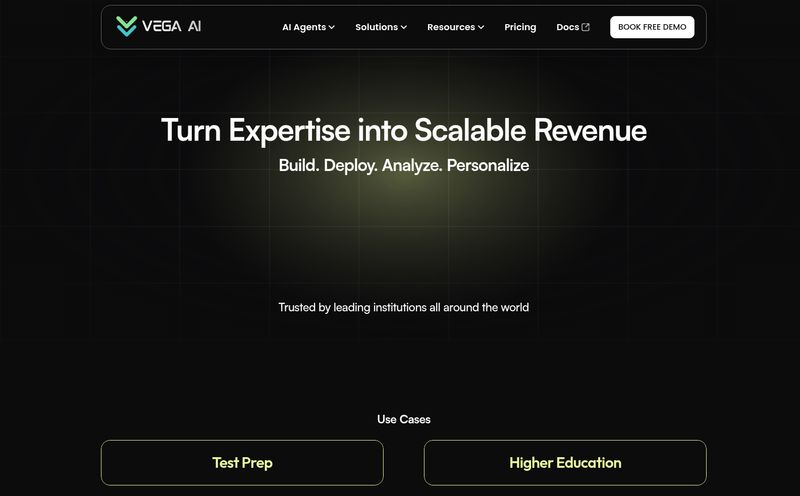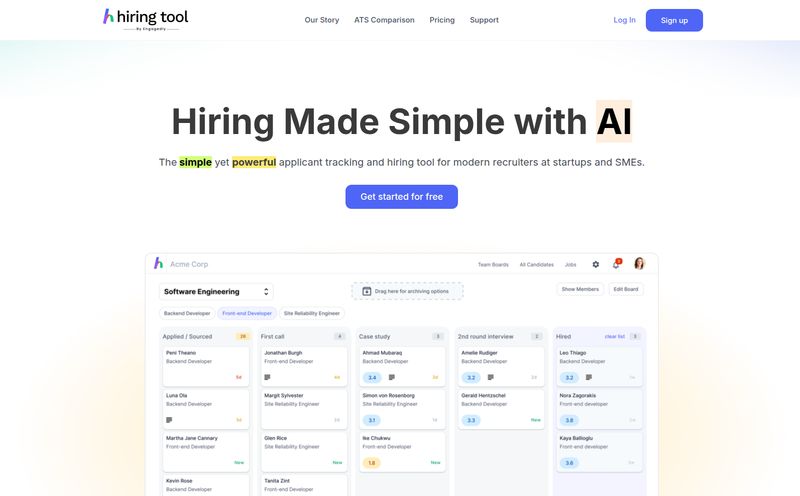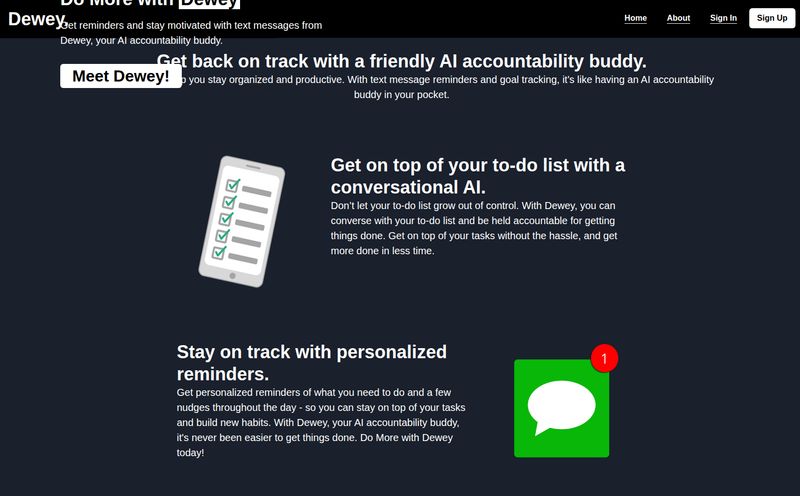For as long as I’ve been in this game—messing with websites, chasing traffic, and watching digital trends come and go—there’s been one constant, almost mythical promise: the universal translator. You know, that little gadget from science fiction that lets you understand any language instantly. We've seen bits and pieces of it with text apps, but real-time, spoken conversation? That's always been the final frontier.
So, when I stumbled upon a site called TranslateMyCall.com, my curiosity was definitely piqued. The premise is simple and audacious. It claims to let you talk on the phone with someone who speaks a different language, acting as your personal AI interpreter. And the kicker? It’s currently free.
Free. That word always sets off a few alarm bells for a seasoned pro, but it also makes you lean in a little closer. Is this for real, or just another tech demo that falls apart under pressure?
So, What's the Big Idea Behind TranslateMyCall?
At its heart, TranslateMyCall is an AI-powered service designed to translate phone calls from one language to another in real-time. Imagine you need to call a hotel in Japan to confirm a booking, or chat with a supplier in Germany, but you don't speak a word of Japanese or German. This tool is meant to be the bridge.
You dial through their system, and the AI listens to you, translates what you say for the other person, and then translates their response back to you. It's like having a three-way call with a very, very fast interpreter who happens to be a robot. The potential here is massive, not just for travel but for small businesses, family connections, you name it.
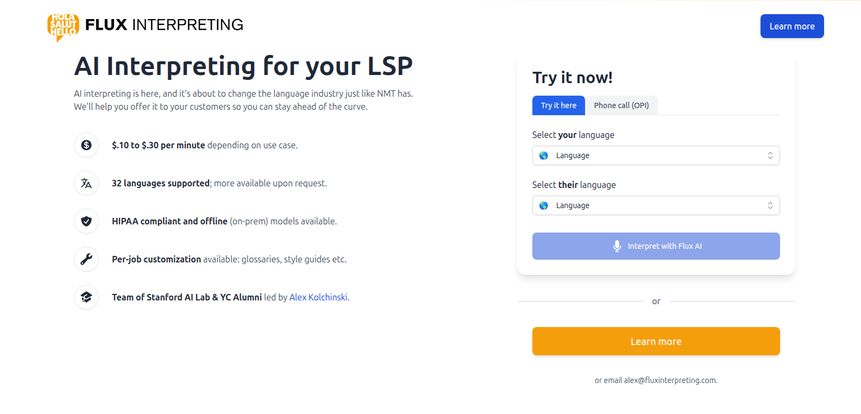
Visit TranslateMyCall
My First Take: The Good, The Bad, and The Alpha
I’ve gotta be upfront: the service is in a public alpha. For anyone not steeped in tech jargon, that means it’s a very early version. It's out there for brave souls like us to test, find the bugs, and see what works. It’s not a polished, finished product, and you have to go in with that expectation.
The upsides are immediately obvious. First, it’s free to use during this testing phase, which is an incredible offer. It also supports a surprisingly wide range of languages and phone numbers from different countries. The setup is designed to be straightforward—no complex software to install, you just use the service to make the call. Easy.
But then there are the alpha-stage realities. The site is clear that things might not always work perfectly. Calls might have glitches, the translation might get wonky. It's the wild west. There’s also a pretty significant privacy note: call recordings may be reviewed for service improvement. This is standard practice for training AI, but it means you absolutely should not be using this for sensitive business negotiations or sharing personal financial information. It's a dealbreaker for some, and understandably so.
From Freebie Tool to Professional Powerhouse: Enter Flux Interpreting
This is where things get really interesting. After digging around, I realized TranslateMyCall seems to be the public-facing experiment for a much more robust, professional-grade service called Flux Interpreting. This looks like the grown-up, enterprise-ready version of the same core technology.
Flux isn't for a casual user trying to book a hotel. It's aimed squarely at LSPs—Language Service Providers. These are the companies that businesses hire for translation and interpretation work. Flux is offering them an AI tool to add to their arsenal, positioning it as the next big shift in the industry, much like how Neural Machine Translation (NMT) changed written translation a few years back.
This tells me the team behind it, a crew of Stanford AI Lab and YC Alumni, is thinking much bigger than just a free consumer app. They're building the foundational tech.
Who is Flux Interpreting Built For?
While TranslateMyCall is for individuals, Flux is for organizations with serious, high-stakes needs. We're talking about features that make a corporate lawyer or a healthcare provider nod in approval. For instance, it offers HIPAA compliant models. That's a massive deal for anyone in the medical field, where patient privacy is non-negotiable. They also mention on-prem (offline) models, which is huge for organizations with Fort Knox-level data security policies.
And it gets more granular. Flux allows for per-job customization with glossaries and style guides. Why does that matter? Well, imagine a legal call versus a technical support call for a software company. The terminology is completely different. This feature ensures the AI interpreter knows the specific jargon for that specific job, which drastically reduces errors. It’s the difference between an amateur and a professional interpreter.
Let's Talk Money: The Flux Pricing Model
Of course, the professional version isn't free. Flux Interpreting operates on a per-minute pricing model, ranging from $0.10 to $0.30 per minute, depending on the use case. Now, if you're not in the industry, that might sound like a lot or a little. But let me give you some context. Traditional human Over-the-Phone Interpreting (OPI) services can run anywhere from $0.70 to over $3.00 per minute. Suddenly, $0.30 for a specialized, AI-driven service sounds incredibly competitive. It's clearly a disruptive price point.
The Bigger Picture: Is AI Interpretation Ready for Prime Time?
This is the million-dollar question, isn't it? An AI that can do this reliably changes everything. It lowers costs, increases access for smaller businesses, and could genuinely connect the world in new ways. But are we there yet?
Based on the two-pronged approach of TranslateMyCall and Flux Interpreting, I’d say we are at a tipping point. The free alpha tool is essentially a massive data-gathering and model-training engine. Every call, every correction, every glitch helps make the core AI smarter. That intelligence is then funneled into the premium Flux product.
However, I'm not ready to say human interpreters are obsolete. Not by a long shot. Nuance, empathy, cultural context, and the ability to say, “Hold on, I think you misunderstood each other” are still uniquely human skills. An AI might translate words perfectly but miss the intent. For a high-stakes diplomatic meeting or a sensitive therapy session, I'm still betting on a human. But for a huge volume of everyday business and personal calls? AI is not just coming; it's here.
Frequently Asked Questions
- Is TranslateMyCall really free to use?
- Yes, according to their website, the service is free during its public alpha testing period. This means you can use it without charge, but should expect it to be a work-in-progress.
- What languages and countries are supported?
- The service supports a wide variety of languages and can make calls to phone numbers in multiple countries. The professional version, Flux Interpreting, lists 32 languages with more available on request.
- Is it safe to use for business calls?
- I would strongly advise against using the free TranslateMyCall for sensitive business information, as calls may be recorded for quality assurance. The paid service, Flux Interpreting, is built for business and offers features like HIPAA compliance and on-premise models for much higher security.
- What is the difference between TranslateMyCall and Flux Interpreting?
- Think of TranslateMyCall as the free, public test version for casual use. Flux Interpreting is the professional, paid version designed for Language Service Providers and businesses, with advanced features like security, customization, and higher reliability.
- How does the AI translation work?
- It works in real-time. When you speak, the AI processes your speech, translates it into the target language, and speaks it to the person on the other end of the line. It then does the same for their response. It’s a continuous, back-and-forth process managed by the AI.
So, Should You Give It a Whirl?
My final take? If you're a curious individual or have a low-stakes personal reason to call someone abroad, absolutely give TranslateMyCall a try. Go in with an adventurous spirit, have fun with it, and be part of the testing process for a cool new technology. It costs you nothing but a bit of time.
If you're a business, especially an LSP, then the real story is Flux Interpreting. It represents a serious and potentially cost-effective tool that could change how you operate. The technology is clearly moving beyond novelty and into professional application.
Either way, it's an exciting time. The dream of the universal translator isn't science fiction anymore. It's in public alpha, and you can try it today. How cool is that?
